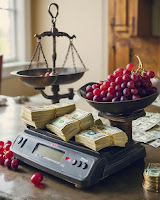Before discussing the topic, let me get some quick business out of the way: The SVB Annual State of the Industry Survey is open for two more weeks, and your participation is vital. We really need your help. We currently have 140 responses but need at least 500 responses. Why participate?
The SVB Wine Industry Report has provided transparent, fact-based direction for the US Wine Industry for decades. The survey adds subjective color to objective data. That color produces better understanding, which is the first step in planning change.
This survey is done in partnership with you the winery. Adding your data to this annual industry event will only take about 20 minutes.
Are the industry headwinds part of a secular correction or just part of a normal business cycle?
The 90s were a period of rapid industry growth that encouraged growers to plant more acres to catch up with demand. When those vines hit full maturity simultaneously with The Tech Recession, we were out of balance with demand.
The excess supply of the early 2000s was erased quickly because the Tech Bubble was one of the shortest recessions on record, the demand for premium wine was increasing broadly, and some vine acres were removed from regions growing for lower-priced wine.
That was an example of an inventory-driven imbalance. Within a few years, the industry adjusted as part of an ordinary course, mainly due to the strong demand for wine that drew down inventory stocks. With that setup, patience is a valid strategy.
Over the past 25 years, periods of oversupply have always occurred concurrently with increasing demand.
There have been several periods since 2000 when we were close to being balanced, but a large harvest tipped the scale unfavorably. Looking at the nearby chart, examples include 2005, which blurred into the 2008 Financial Crisis. 2018 was another large harvest that coincided with the beginning of the current slowing consumption pattern.
All of the imbalances we've experienced since the middle 1990s have primarily been caused by overplanting or large harvests, and the industry has developed solutions to cope with periods of imbalance that might not work in our current situation.
All we have to do is wait.
My friends held strong views that this was just a cycle and everything would right itself in due course if we were patient. That belief is only partially right, in my opinion.
All market imbalances eventually correct themselves, so that portion of their view was correct. However, patience doesn't always produce the desired outcomes. That's the part they missed that day.
For at least a decade, I've been told that we just need to wait until younger consumers mature, and at that point, they will adopt wine like the boomers did before. That strategy has yet to correct declining demand.
I've also been told that wine always goes better with food than other alcoholic beverages. While I agree, taking it as an unchangeable attribute has helped shape beverage lists that creatively include alcoholic beverages other than wine.
In the 1990s, wine received a great gift in science: science proved that moderate consumption has some health benefits. We reacted as if the science was settled and did nothing as an industry to protect that gift. In contrast, the anti-alcohol movement did everything it could to chip away at that uncomfortable truth.
If we wait, supply will certainly adjust on its own. We've already seen that happen with some winegrapes going unpicked in every AVA on the West Coast this harvest. We all know what happens when grapes aren't contracted. The grower will lower the price to find a buyer, or they will remove the vines. Waiting, once again, isn't the right strategy.
What we're experiencing today is different from past supply imbalances.
This is not a small road bump. We are experiencing the first demand-based correction since the 1980s, the underlying trends of which were called out in the 2018 SVB State of the Wine Industry Report.
Inventory imbalances can be corrected quickly when there is increasing demand like we've had for the past 25 years. Today however, demand for wine is declining - not for everything at every price point, but there are better strategies than waiting. This secular correction will take longer to rebalance compared to past imbalances unless we collaborate as an industry to regain our foothold with consumers.



